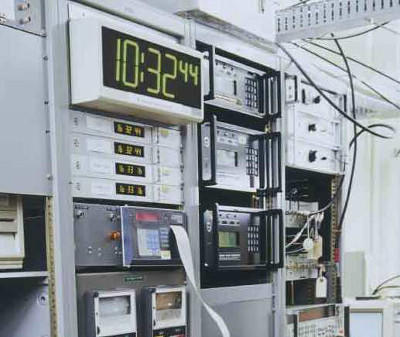
NIST maintains two major time scales. The core scale, AT1, is a weighted average of atomic clocks. The most-used output is the second time scale, UTC(NIST). UTC (NIST) is a real-time realization of the international standard, Coordinated Universal Time (UTC). UTC, is agreed by international treaty to be generated as a weighted average of clocks around the world.
For the great majority of human history, the earth's rotation—the apparent motion of the sun and stars across the sky—kept time far more precisely than any human-made clock. But the invention of super-accurate atomic clocks more than 60 years ago demonstrated that the earth's rotation rate is, in fact, changing by tiny amounts every day.
The Earth is supposed to make one full rotation every 86,400 seconds, but a range of complex issues change the rotation rate by a microsecond or so each day. Sometimes it speeds up, sometimes it slows down, but on average, the Earth's rotation is slowing little by little. So, in order to keep Coordinated Universal Time (UTC), measured by atomic clocks, in line with astronomical time, leap seconds are occasionally needed.
On June 30, 2015, at 23:59:59 UTC (just before 8 p.m. Eastern Daylight Time) the world will add its 26th leap second since 1972. This is the first leap second since 1997 to be added during normal business hours in the U.S., particularly on the West Coast. Because there are many systems that rely on precision timing synchronized to UTC, several U.S. government agencies, including NIST, have provided a best practices guide to help people respond to the upcoming leap second.
UTC, official international time, is a hybrid of timing based on atomic clocks to provide the precise "ticking rate" and astronomical time based on the position of the sun and stars. Because atomic clocks are much more stable than the earth's rotation, atomic time and astronomical time would very slowly diverge, until in the very distant future atomic clocks would read "midnight" while the sun was directly overhead. Leap seconds are added when necessary to keep atomic time and astronomical time synchronized to better than one second.
Because the Earth's rotation speeds up and slows down in an unpredictable manner (the only thing we do know is that the rotation rate will slow down over the long term because of gravitational forces from the moon and sun), it is not possible for scientists to know exactly when to add leap seconds more than a few months ahead of time. While this gives people some time to prepare, adding a leap second to systems tied to atomic time can be problematic. In particular, adding leap seconds can cause interruptions or failures in data logging, telecommunications, and time distribution systems. During the most recent leap second at the end of December 31, 2012, sections of the Internet were interrupted for a few hours. Since then, applications requiring precision timing have become even more widespread, raising concerns that if the leap second is not properly implemented on June 30, it could have broader impacts.
The international community is discussing a range of options for the future of global timing, from keeping the current system of leap seconds, to entirely eliminating leap seconds, to combining leap seconds into much less frequent leap hours. The Radio communication Sector of the International Telecommunication Union (ITU-R), representing nearly all the world's nations will make the final decisions in the future.

